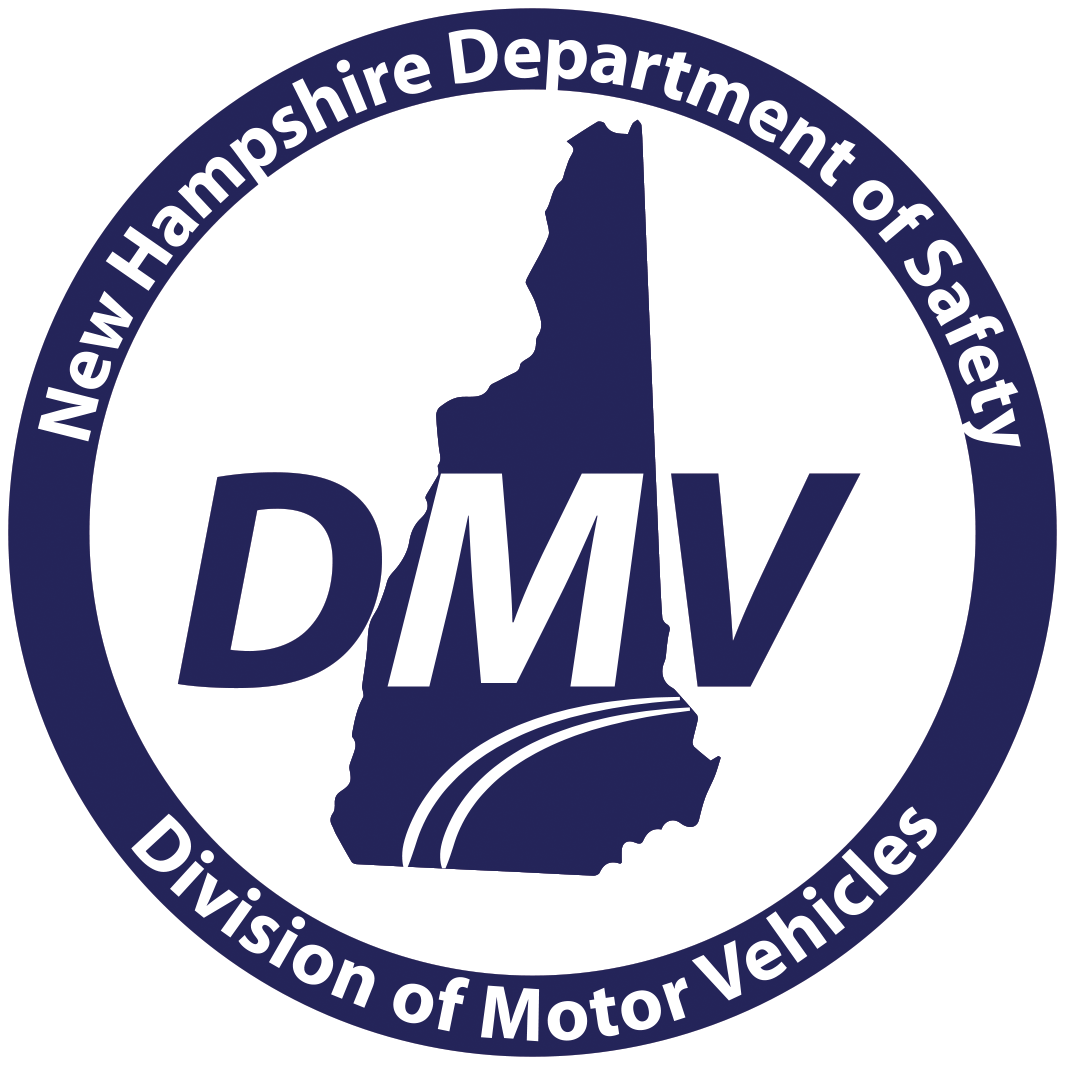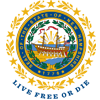License Classifications, Restrictions and Endorsements
What you need to know about the different classifications of driver licenses, Driver License restrictions, and CDL Endorsements
License Classifications
Drivers in New Hampshire must have the proper class of license to match the type of vehicle they drive. Vehicles in New Hampshire are classified according to the manufacturers' gross vehicle weight rating and body style. The New Hampshire classified license system is broken down as follows:
- Class A: Any combination of vehicles with a GVWR of 26,001 or more pounds provided the GVWR of the vehicle(s) being towed is in excess of 10,000 pounds. Tests required for a Class A license in New Hampshire:
- General CDL Knowledge Test.
- Combinations Knowledge Test.
- Air Brakes Knowledge Test.
- Entry-Level Driver Training (ELDT) must be completed before road test is scheduled (for more information please visit: FMCSA, and FMCSA FAQs)
- Road Skills Test in a Class A vehicle.
- Class B: Any single vehicle with a GVWR of 26,001 or more pounds, or any such vehicle towing a vehicle not in excess of 10,000 pounds GVWR. Tests required for a Class B license in New Hampshire:
- General CDL Knowledge Test.
- Air Brakes Knowledge Test.
- Entry-Level Driver Training (ELDT) must be completed before road test is scheduled (for more information please visit: FMCSA, and FMCSA FAQs)
- Road Skills Test in a Class B vehicle.
- Class C: Any single vehicle, or combination of vehicles, that does not meet the definition of Class A or Class B, but is either designed to transport 16 or more passengers, including the driver, is required to be placarded for hazardous materials or meets the definition of a "tank" vehicle. Required for a Class B license in New Hampshire:
- General CDL Knowledge Test.
- Completion of all requirements for one of the following endorsements:
- Passenger Endorsement.
- Hazmat Endorsement.
- Class D: Operator License. An operator license is what most people think of as a "regular" driver license. It allows you to drive a vehicle with a gross vehicle weight of 26,000 pounds or less. With an operator's license, you can tow a trailer with a gross weight of 10,000 pounds or less, but you cannot transport hazardous materials or drive a bus designed to transport more than 15 persons. An operator license allows you to drive a moped but not a motorcycle, 3-wheeled motorcycle or motor-driven cycle.
- Motorcycle License: A motorcycle license allows you to drive motorcycles, mopeds and 3 wheeled motorcycles. Most drivers with a motorcycle license also hold either an operator or commercial license, although, it is possible to hold a Motorcycle-only license which allows operation of a motorcycle but no other class of vehicle.
- 3-Wheeled Motorcycle: This license type allows you to drive a three-wheeled motorcycle but not a two-wheeled motorcycle or motor-driven cycle. If you take a motorcycle road test on a three-wheeled motorcycle, you are restricted to operating only a three-wheeled motorcycle. If you take a motorcycle road test on a conventional, two-wheeled motorcycle you can operate a three-wheeled motorcycle.
- Motor-driven Cycle License: This license type allows you to drive any moped, motor scooter, bicycle with motor attached and small motorcycle with no more than five (5) horsepower.
- Moped License: This license type allows you to drive a moped only. To be classified as a "moped", a vehicle must meet all of the following:
- Not require the driver to shift gears.
- Have a motor not more than two (2) horsepower or 50 cc. in size.
- Not be able to go faster than 30 MPH on level ground.
License Restrictions
Under certain conditions, the privilege to drive a motor vehicle is restricted in specific ways. If a driver has a restriction on his or her license, it will be listed on the back of the license. Restrictions placed on a driver license include:
- E Restriction: The driver may only operate a commercial vehicle with an automatic transmission.
- F Restriction: An outside mirror is required on the vehicle.
- G Restriction: The driver of vehicle is only allowed to operate during daylight hours.
- K Restriction: Intrastate Only: Drivers are authorized to drive a commercial vehicle within the state of New Hampshire only. This restriction applies to any holder of a New Hampshire CDL license who is under 21 years old.
- L Restriction: Air Brakes: Drivers are restricted from operating a commercial vehicle with air brakes. This restriction is issued when a driver either fails the air brake component of the general knowledge test or performs the road skills test in a vehicle not equipped with air brakes.
- M Restriction: CDL-A holders may operate CDL-B school buses only.
- N Restriction: CDL-A and CDL-B holders may operate CDL-C school buses only.
- O Restriction: Except Tractor Trailers: Driver limited to pintail hook trailers only.
- T Restriction: 60-day temporary license.
- Z Restriction: No Full Air brakes
- IID Restriction: Alcohol Interlock Device
- V Restriction: CDL Variance (relates to Med Card)
- RTW Restriction: Restricted to 3 wheel Motorcycle
- RMC Restriction: Restricted to Motor Driven Cycle
- X Restriction: No Cargo in commercial motor vehicle Tank Vehicle (CDL Permit)
- P restriction: No Passenger in commercial motor vehicle (CDL Permit)
Age Restrictions
- Youth Operators
- A driver must be at least 16 years of age to get a New Hampshire Driver License. Drivers between the ages of 16 and 21 will be issued a Youth Operator License which will expire on their 21st birthday. Drivers 16 and 17 years old may apply for a license only if they pass an approved Driver Education Program.
- Drivers under 18 years of age cannot get a commercial driver license and must observe the following restrictions:
- Shall not operate a motor vehicle between the hours of 1:00 a.m. and 4:00 a.m.
- During the first 6 months holding the license, shall not operate a motor vehicle with more than one passenger less than 25 years of age who is not a member of the driver's family unless accompanied by a licensed, responsible adult who is at least 25 years of age.
- Shall not operate a motor vehicle with more passengers than seat belts or safety restraints in the vehicle.
CDL Endorsements
In addition to the weight-related classifications, commercial drivers can apply for different endorsements based on the type of vehicle they intend to operate by requesting an appointment. Additional testing is required to obtain each of the following endorsements:
- Hazardous Materials or Hazmat (H endorsement): Required in order to drive any commercial vehicle which transports hazardous materials and is placarded under State or Federal regulations. To obtain or renew this endorsement drivers must pass:
- Transportation Safety Administration (TSA) Background Check prior to applying and
- Entry-Level Driver Training (ELDT) must be completed before road test is scheduled (for more information please visit: FMCSA, and FMCSA FAQs)
- Hazmat Knowledge Test
- Tank Vehicles (N endorsement): Required to drive any commercial vehicle designed to transport liquid in a tank that is either permanently or temporarily attached to the vehicle or the chassis, or any liquid or liquefied gaseous material in a permanent tank that requires placards.
- Tank Knowledge Test.
- Passenger Vehicles (P endorsement): This endorsement is required to drive any commercial vehicle designed to transport 16 or more passengers including the driver. Applicants for this endorsement must pass:
- Passenger Transport Knowledge Test (a CDL Permit will be issued when successfully completed)
- Entry-Level Driver Training (ELDT) must be completed before road test is scheduled (for more information please visit: FMCSA, and FMCSA FAQs)
- Passenger Transport Road Skills Test. Skills test must be taken in a passenger-type vehicle representative of the desired CDL class.
- Double/Triple Trailers (T endorsement): This endorsement is needed to legally haul double or triple trailers. Although it is illegal to operate triple trailers in New Hampshire, this endorsement will allow the holder to haul a triple trailer in those states which allow such vehicles. Applicants for this endorsement must pass:
- Doubles/Triples Knowledge Test.
- School Bus (S endorsement): A school bus endorsement (S endorsement) is a federally recognized endorsement required by any state to drive a school bus designed to transport 16 or more students, including the driver. To obtain this endorsement drivers must successfully pass:
- School Bus knowledge test. (a CDL Permit will be issued when successfully completed)
- Entry-Level Driver Training (ELDT) must be completed before road test is scheduled (for more information please visit: FMCSA, and FMCSA FAQs)
- School Bus Road Skills Test. A skills test must be taken in a school bus vehicle representative of the desired CDL class.
- School Bus Drivers.



